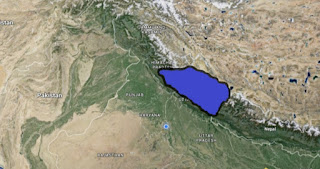The kingdom of Kuninda was a Himalayan kingdom that existed from around the 2nd century BC to the 3rd century AD, located in the modern State of Uttarakhand and southern areas of Himachal Pradesh.
The Greek historian Ptolemy linked the origin of the Kuninda to the country where the rivers Ganges, Yamuna and Sutlej originate.
The Kuninda kingdom disappeared around the 3rd century, and the region shifted to Shaivite beliefs. The coins of Kuninda were influenced by the numismatic designs of the Indo- Greek kingdom and followed their weight and size standards. Kuninda coins are often found together with the Indo-Greek coins in hoard, particularly those of Apollodotus. A very large number of Kuninda coins are in the name of king Amoghabhuti and these continued even after his death.





No comments:
Post a Comment
Any inputs or feedback is welcome!